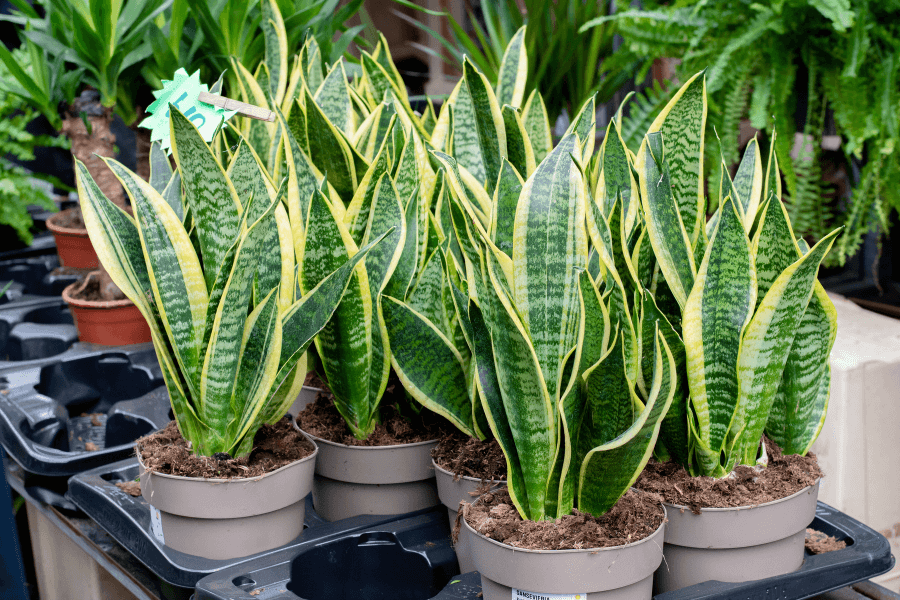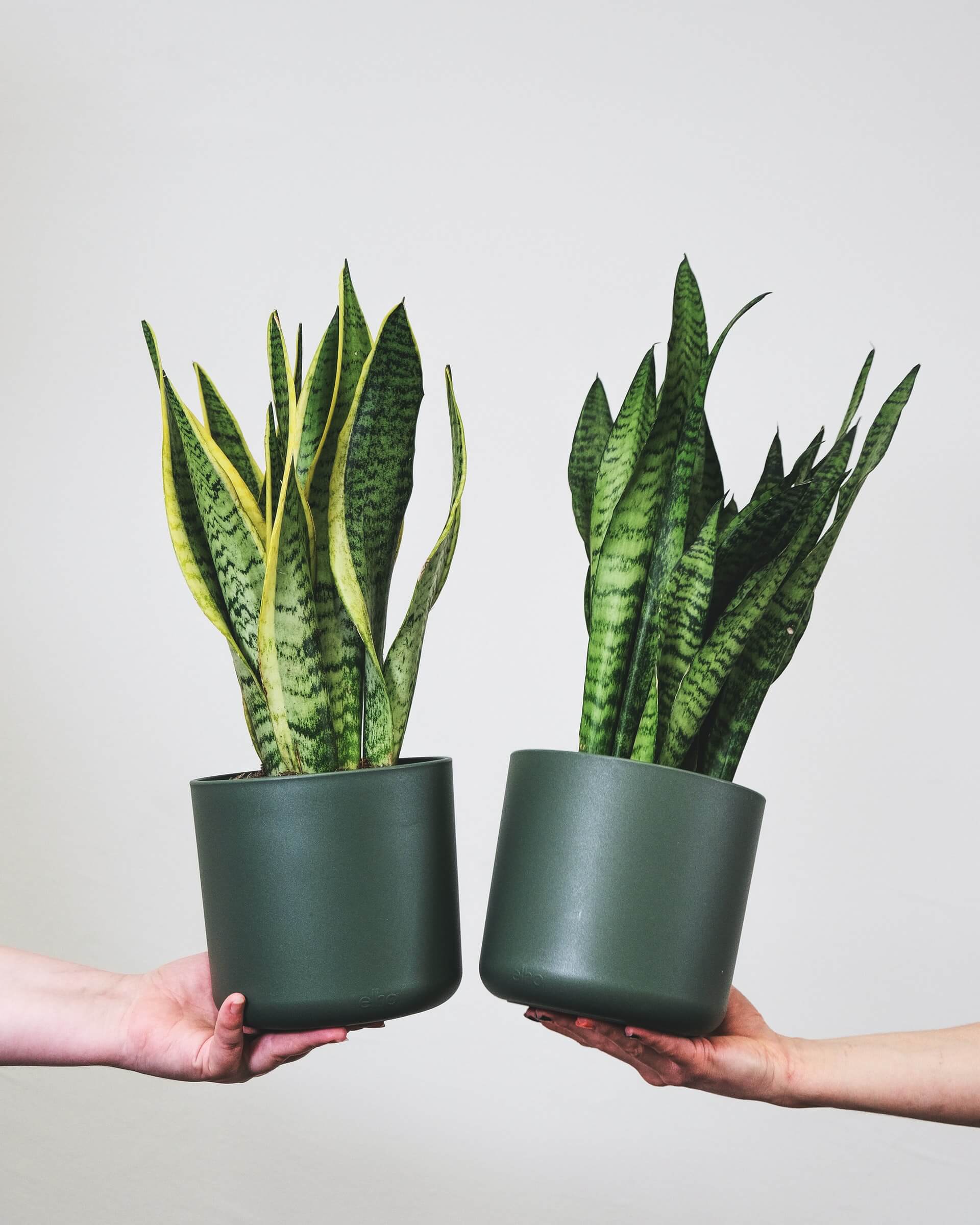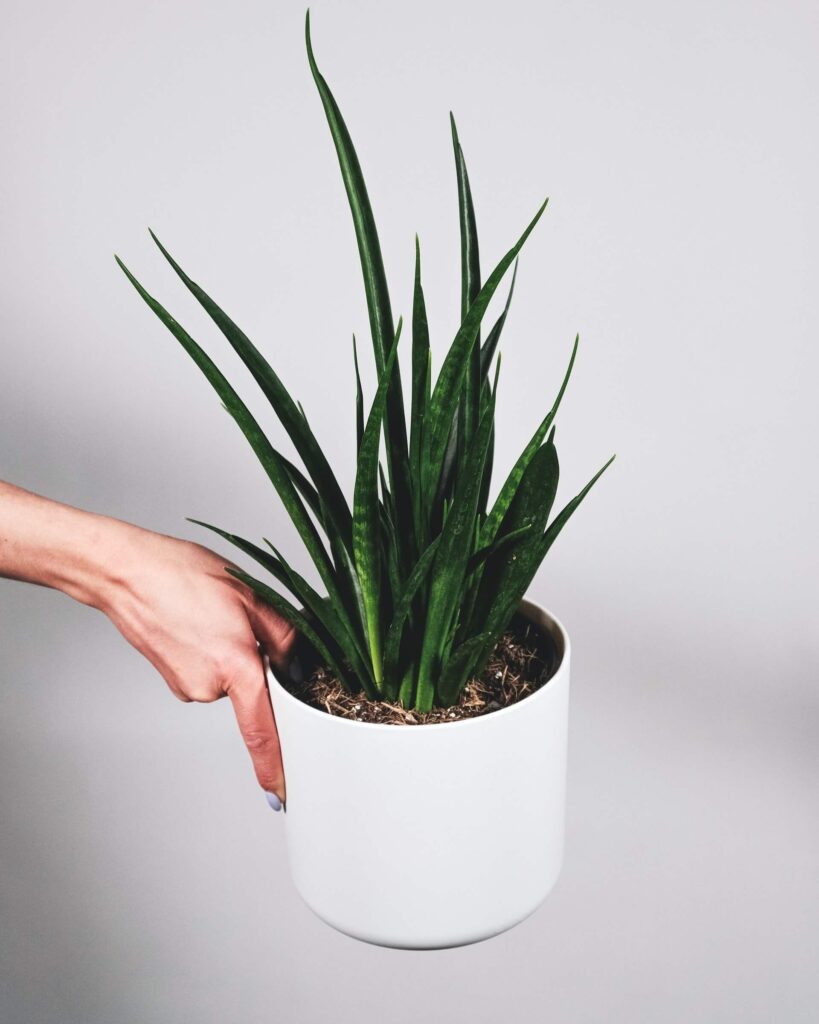
Table of Content
The Snake plant also called ‘Mother-in-Law’s Tongue’, is a gorgeous plant with a unique appearance. It can be easily distinguished by its stiff, sword-like leaves and its indestructible nature. In fact, its ability to thrive in almost any condition is one of the main reasons why it’s so popular.
If you’re a novice gardener looking for an easy plant to grow, snake plants would be a perfect choice for you! In this article, we’ve got everything you need to know about snake plants and how to grow them in your garden.
What are Snake Plants?

Botanically known as “Sansevieria trifasciata” or “Dracaena trifasciata”, snake plants are also called “viper’s bowstring hemp” as their fibers are often used in making bowstrings.
These evergreen perennials, which are also succulents, are indigenous to tropical West African regions and in some parts of northern Australia. they’re considered noxious weeds due to their high tolerance and resiliency to harsh weather conditions. The leaves of snake plants have microscopic pores called “stomata” which only open at night and this process helps them to prevent water evaporation in the daytime.
Snake Plants as Air Purifiers
Snake plants have been acknowledged by NASA as one of the best air-purifying abilities due to their ability to eliminate toxic VOCs (volatile organic compounds) from the atmosphere.
According to a study published in the Harvard University Extension, the snake plant is among the most oxygen-producing houseplants, along with ficus and pothos plants. It can absorb pollutants such as benzene, xylene, formaldehyde, and toluene, as well as some cancer-causing chemicals. Snake plants can also absorb carbon dioxide and release oxygen back to the environment at night which makes them ideal for enclosed spaces.
How to Grow Snake Plants
When growing snake plants, there are a few factors that need to be taken into consideration. These include the following:
The Soil
Snake plants perform best in well-drained and loose soils. Plant them in a soil-based growing media with a combination of cactus and succulent potting mix. For additional soil amendments and improvements use some perlite as they’re perfect for the optimum growth of your plants.
Perlite is a naturally occurring mineral generally found in potting mixes to improve drainage and aeration as well as water retention in your plant. Snake plants develop root rot in the presence of soggy, constantly wet growing conditions so remember to avoid heavy, clayish types of soils when you plant them.
Light Requirements
Snake Plants are versatile plants that can survive full sun or dimly lit conditions. However, it shows optimal growth when exposed to indirect yet steady light with a few hours of direct sun. They show slow growth when placed in indoor light.
Fertilizing
Snake plants can be fed with mild cactus fertilizer during their seasons of growth or a balanced liquid slow-release (10-10-10) which is diluted to half strength. Avoid fertilizing in the winter.
Watering
When growing snake plants, it’s crucial that to remember not to overwater them as it could lead to soggy soil and later to root rots.
- Avoid watering too regularly to allow the soil to dry out between the times you water it.
- It’s best to water from the bottom of the pot. This will help the roots to go down and deep to strengthen the thick and tall leaves.
- Water your snake plants much less in winter than you would in summer or spring.
- Find out if it’s time to water your snake plant by sticking your finger or wooden chopstick a few inches into the soil and not by how the soil surface merely looks.
- Remember that you need to pause the watering momentarily if you feel any soggy soil or moisture stuck to the chopstick.
The Ideal Temperature
Snake plants are versatile plants that can survive low temperatures as cold as 7 degrees Celsius (45 Fahrenheit) and dry, hot summers with temperatures up to 40 degrees Celsius (104 Fahrenheit). However, snake plants favor warm conditions and temperatures between 18 to 32 Celsius (65 to 90 Fahrenheit). Any temperatures below or over the above said could cause damage to these plants.
Follow these steps to protect your snake plant from frost or adverse weather conditions
- Apply a thick layer of mulch to insulate your plant
- Consider having a sunshade to reduce the sunlight
- Cover your plants with sheets, blankets, or floating row covers to keep them warm and avoid any frost from the cold winter nights.
Snake plants are bound to die in temperatures lower than 50 degrees Celsius. Remember to keep your plant indoors and the soil dry during those, freezing days.
Pests and Diseases
Snake plants can be affected by scales, gnats, spider mites, aphids, mealybugs, and whiteflies. Maintain the correct levels of humidity, temperature, and air circulation to prevent the plant from any insect attacks.
Remove any noticeable bugs or other insects by picking them out or spraying them with water. Organic neem oil insecticide soap can also be used to keep those pests away from the plant.
Common Problems to Watch Out For

Foul-Smelling Soil
You know your snake plant has root rot if there’s a rotten smell coming from it. To save your plant, cut away any brown, mushy roots, or leaves and repot the healthy roots in fresh potting mix. But if your rhizomes (mass of roots) are destroyed, do leaf-cutting and propagate a new plant instead.
Yellow or Brown Leaves
If your snake plants look too yellow or brown, it could mean that they’re possibly affected by overwatering, pests, or root rot. Root rot could stress the plant and make it more vulnerable to pests making it worse for the plant. To prevent these conditions, manage the water levels as required
Curling Leaves
Monitor the snake plant closely for any tiny bugs which can cause the leaves to curl in. The remedy to this condition is as simple as cutting away the highly curly leaves and spraying the plant with neem oil or vegetable soap. The new leaves would grow in time.
Leaves Falling Over or Drooping
Sometimes excess water, inadequate light, or poor potting material can cause snake plants to droop down. This is a result due to the soggy soil that might be present in an inefficiently draining potting system. Therefore, secure the plant with better-draining soil, sunlight, and water only as required
Planting
- First, choose a plastic container with enough drainage holes.
- Fill 1/3rds of the container with palm and cactus potting mix.
- Place the plant in the container ensuring that its root ball is an inch below the rim to leave room for watering later.
- Then fill around the root ball with enough soil and press gently.
- Place the pot at a warm spot in your house so your plants can receive indirect yet bright light.
- The ideal temperature would have to be above 50 degrees Celsius.
- Water it as required and let it drain.
- Remember to keep the plants away from drafty windows during the winter to protect them from the cold.
How to grow snake plants from seeds
If you are considering growing snake plants from seeds, bear in mind that seeds tend to have a low germination rate and would take between three to six weeks for a seedling to appear. However, if like to give it a try, here’s how you should do it.
- Fill a 3-inch plastic pot with a well-draining cactus potting mix.
- Sprinkle the seeds over the top of the starting mix.
- Next, place the pot in a warm and sunny spot.
- The pot must be covered with plastic wrap or a clear plastic dome to retain the humidity and warmth.
- This plastic covering can be removed once you notice the growth of the seedlings.
- Remember to keep the soil slightly moist during germination.
- You can repot your plant once your seedling is at least 3 to 4 inches tall
Propagating Snake Plants
Given the downsides to growing snake plants through seeds, propagating could be a much more reliable and faster option to grow snake plants
The best season to propagate snake plants would be spring or summer. You can propagate snake plants in three different ways. Let’s look at each closely
Propagating by Root Division
- Remove the root ball out of the old pot and place it on a flat surface.
- Brush away the soil from the root structure or rhizome.
- Cut through the plant to divide it into sections while being certain that the roots remain intact.
- The new plants can then be planted as explained earlier.
Propagating by Offshoots
Any baby shoots that have grown can be planted separately
- Pull out the root and spot the offshoots roots.
- Cut them off with a sharp knife.
- The roots then can be planted in the cactus potting soil.
- Water them as required and place in indirect bright light.
Propagating by Leaf Cuttings
- Cut off a healthy leaf from your snake plant using a sharp and sterile knife.
- Next, place the cut end of the leaf in a jar of water.
- The jar has to be kept in a sunny spot.
- Monitor the Jar for any root growth and keep your water at a similar level by filling it up regularly throughout this time.
- Water should be changed every two weeks to inhibit the growth of algae or bacteria.
- When the roots have grown up about an inch, plant the root ends in a well-draining potting mix.
- You can also trade this step into slicing off the leaves first and then allowing the cut edges to develop new tissue within the next 24 hours. Then, simply pot the with the cut edges down in your potting mix.
- The plant will sprout and show new seedlings within about two months.
Pruning

Pruning is essential to keep snake plants in good health, and free of any damaged leaves. However, it should be avoided if the plant is in poor health. To reap the best results of pruning, do it over the spring or summer when the plant is still growing.
Cut off damaged or matured leaves at the soil line to boost its growing process using sterile pruning shears. If the plants are too tall, remove any leaves that get marred as it will encourage new growth.
Different Types of Snake Plants
Here’s a look at some of the most common varieties of snake plants:
- Birds Nest Snake Plant (Sansevieria hahnii): This variety grows up to about 6 inches tall with a clump of leaves that resembles the shape of a bird’s nest.
- Cylinder Snake Plant (Sansevieria cylindrical): The foliage of this species is made of dark green, cylindrical leaves and has a similar appearance to a folding fan.
- Bantel’s Sensation Snake Plant (Sansevieria ‘Bantel’s Sensation’): The leaves of these plants are narrow with white vertical stripes and they grow up to about 3 feet tall in height.
- Rhino Grass Snake Plant (Sansevieria ‘Rhino grass’): The highlights of these plants are their succulent red-tinted leaves that grow up to about 12 inches in length.
FAQs about Snake Plants
Snake plants are drought-tolerant and can go for long periods without water. Water only when the soil is completely dry to the touch, usually every two to four weeks.
Snake plants prefer bright, indirect light, but can also tolerate low light conditions. Avoid direct sunlight, as it can scorch the leaves.
Snake plants prefer well-draining potting soil, such as a mix of regular potting soil and perlite or sand.
Snake plants don’t require frequent fertilization. Feed with a balanced, water-soluble fertilizer once a month during the growing season (spring and summer).
Snake plants are easy to propagate. Cut a healthy leaf from the mother plant and plant it in a pot with well-draining soil. Water sparingly and place in a bright, indirect light source.
Yes, snake plants can be grown outdoors in warm, frost-free climates. They prefer bright, indirect light and well-draining soil. Protect from direct sunlight and heavy rain.
The Take-Away
These hardy and low-maintenance plants are perfect for beginners, and their unique and striking appearance makes them a great addition to any home or office. To care for your snake plant, all you need is a bright, indirect light source and a well-draining potting mix.
Be sure to water your plant sparingly, as snake plants are drought-tolerant and can easily be overwatered. With a little bit of TLC, your snake plant will thrive and grow, providing you with clean, fresh air and a touch of greenery to brighten up your space. So go ahead, give snake plants a try – they might just surprise you with their resilience and beauty!






